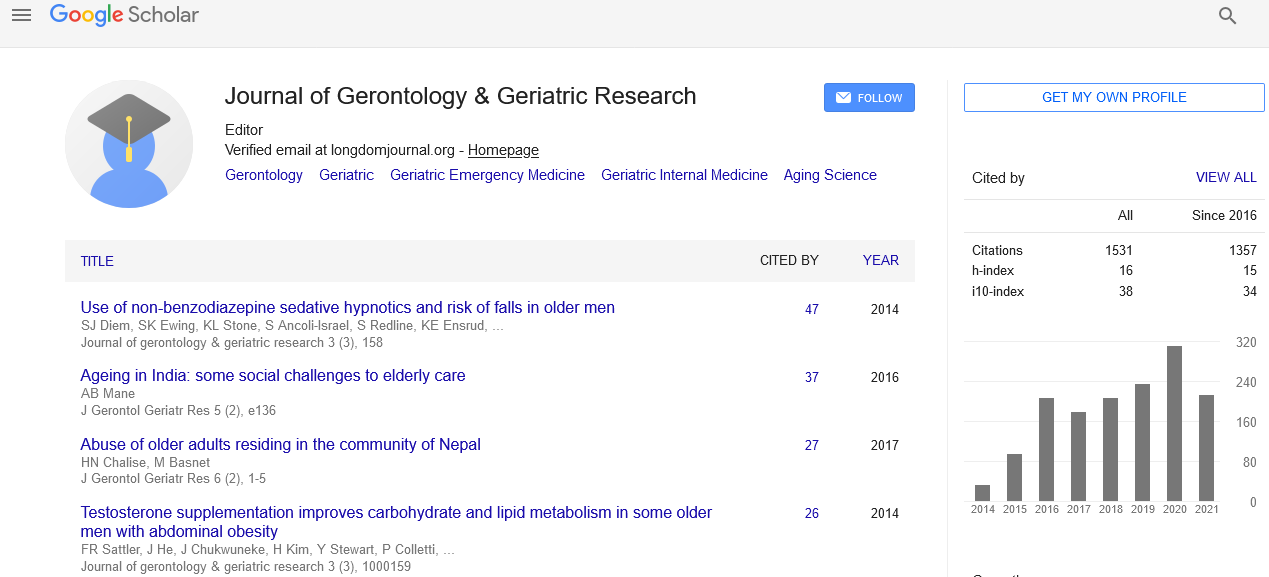PMC/PubMed Indexed Articles
Indexed In
- Open J Gate
- Genamics JournalSeek
- SafetyLit
- RefSeek
- Hamdard University
- EBSCO A-Z
- OCLC- WorldCat
- Publons
- Geneva Foundation for Medical Education and Research
- Euro Pub
- Google Scholar
Useful Links
Share This Page
Journal Flyer

Open Access Journals
- Agri and Aquaculture
- Biochemistry
- Bioinformatics & Systems Biology
- Business & Management
- Chemistry
- Clinical Sciences
- Engineering
- Food & Nutrition
- General Science
- Genetics & Molecular Biology
- Immunology & Microbiology
- Medical Sciences
- Neuroscience & Psychology
- Nursing & Health Care
- Pharmaceutical Sciences
Abstract
Incidence and Risk Factors for Frailty in the Community-Dwelling Elderly Population. A Two-Year Follow-Up Cohort Study
Serra–Prat M, Papiol M, Vico J, Palomera E, Arús M and Cabré M
Background: Frailty is a highly prevalent geriatric syndrome and a major public health problem. Designing effective preventive measures requires an understanding of frailty mechanisms and risk factors.
Objective: To estimate the incidence of frailty and identify the main risk factors for frailty in community-dwelling elderly individuals.
Design: Cohort study followed up over 2 years.
Participants: Non-frail community-dwelling individuals aged 75 years and older.
Measurements: Socio-demographic variables, co-morbidities, lifestyle, nutritional status, anabolic hormones, inflammatory markers, physical exercise and body composition. Frailty, assessed annually, was defined according to Fried criteria.
Results: 278 subjects were recruited (mean age 79.9 years; 42.8% women). Frailty incidence was estimated as 6.8 new cases/100 person-years. Risk factors for frailty were being female, arthrosis, depression, dyspepsia, number of medications, being unable to stand on 1 foot for 5 seconds, a positive Timed Up-and-Go test, a Barthel Index score <90, a high waist-hip ratio, high cholesterol and interleukin-6 levels and low glomerular filtration. Physical exercise was a protective factor for frailty. Risk factors for frailty in men were number of comorbidities, tricipital skinfold and previous handgrip, and in women, insulin resistance and cortisol levels.
Conclusion: The fact that certain modifiable risk factors for frailty were identified would suggest that better control of underlying diseases and inflammatory processes, a review of prescribed medications, physical exercise and correction of obesity and hypercholesterolaemia could be effective interventions to reduce frailty in communitydwelling elderly subjects. However, the effectiveness of such interventions needs to be demonstrated by welldesigned clinical trials.


